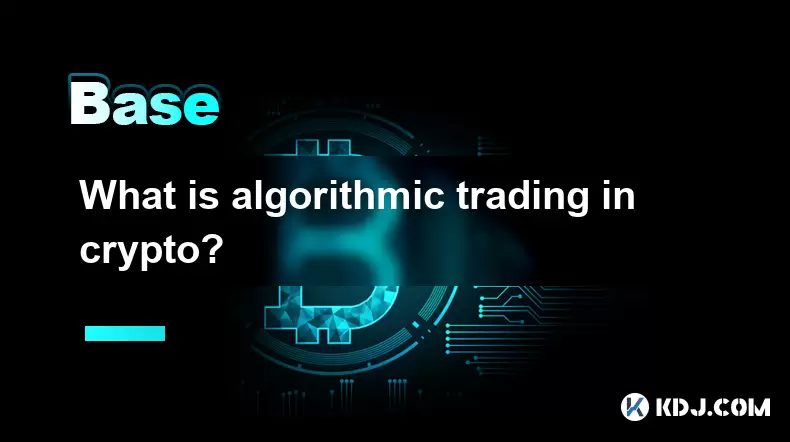-
 Bitcoin
Bitcoin $108,879.8879
0.11% -
 Ethereum
Ethereum $2,565.0410
0.07% -
 Tether USDt
Tether USDt $1.0001
0.00% -
 XRP
XRP $2.2915
-0.14% -
 BNB
BNB $660.7569
-0.20% -
 Solana
Solana $151.1919
-0.78% -
 USDC
USDC $1.0000
0.00% -
 TRON
TRON $0.2869
-0.14% -
 Dogecoin
Dogecoin $0.1698
-0.98% -
 Cardano
Cardano $0.5832
-0.83% -
 Hyperliquid
Hyperliquid $38.2151
-3.65% -
 Sui
Sui $2.8819
-1.10% -
 Bitcoin Cash
Bitcoin Cash $498.0045
0.53% -
 Chainlink
Chainlink $13.3860
-1.54% -
 UNUS SED LEO
UNUS SED LEO $9.0541
-0.22% -
 Stellar
Stellar $0.2535
1.00% -
 Avalanche
Avalanche $18.0791
-0.65% -
 Shiba Inu
Shiba Inu $0.0...01185
0.83% -
 Toncoin
Toncoin $2.7669
-1.12% -
 Hedera
Hedera $0.1575
-1.49% -
 Litecoin
Litecoin $86.3735
-1.06% -
 Monero
Monero $316.7337
-1.19% -
 Dai
Dai $1.0000
0.01% -
 Polkadot
Polkadot $3.3611
-0.82% -
 Ethena USDe
Ethena USDe $1.0002
0.01% -
 Bitget Token
Bitget Token $4.2618
-1.76% -
 Uniswap
Uniswap $7.4587
0.85% -
 Aave
Aave $282.3607
-1.88% -
 Pepe
Pepe $0.0...01004
-0.06% -
 Pi
Pi $0.4576
-0.29%
What is algorithmic trading in crypto?
2025/07/08 19:21

Understanding Algorithmic Trading in the Cryptocurrency Market
Algorithmic trading, often abbreviated as algo-trading, refers to the use of computer programs that follow a defined set of instructions (an algorithm) to place trades. In the context of cryptocurrency, this means executing buy or sell orders based on pre-set criteria such as price, volume, timing, or mathematical models.
The appeal of algorithmic trading in crypto lies in its ability to process large volumes of data quickly and execute trades at optimal times, something human traders may struggle with due to emotional bias or slower reaction speeds.
Key Takeaway: Algo-trading automates decision-making using predefined rules to improve efficiency and accuracy in trade execution.
How Does Algorithmic Trading Work in Crypto?
At its core, algorithmic trading in crypto involves writing or deploying code that connects to an exchange's API and executes trades automatically when certain conditions are met. These conditions could be technical indicators like moving averages, RSI (Relative Strength Index), or even sentiment-based triggers derived from news or social media feeds.
For instance, a simple algorithm might be programmed to buy Bitcoin whenever its 50-day moving average crosses above its 200-day moving average, commonly known as the "Golden Cross." Conversely, it might sell if the opposite occurs, the "Death Cross."
- The trader defines the strategy.
- A developer writes the algorithm or uses existing platforms.
- The bot is connected to a crypto exchange via API keys.
- The bot starts placing trades autonomously.
Important Detail: Traders must ensure their bots are secure and thoroughly tested before going live to avoid losses due to bugs or misconfigurations.
Types of Algorithms Used in Crypto Trading
There are several types of algorithms used in crypto algo-trading, each tailored for specific strategies:
- Arbitrage Algorithms: These exploit price differences across exchanges. For example, buying Litecoin on one exchange where it’s cheaper and selling it immediately on another where it’s priced higher.
- Market-Making Algorithms: These provide liquidity by placing both buy and sell orders around the current market price, profiting from the spread.
- Trend-Following Algorithms: These analyze historical data and chart patterns to predict future price movements and act accordingly.
- Mean Reversion Algorithms: These assume prices will revert to their average over time and make trades based on deviations from the mean.
Each type requires a different level of complexity and data input. Choosing the right one depends on the trader’s goals, risk tolerance, and available resources.
Crucial Insight: Understanding which algorithm suits your investment profile is key to successful implementation.
Tools and Platforms for Algorithmic Trading in Crypto
Several platforms cater specifically to algorithmic trading in cryptocurrency. Some popular ones include:
- Binance Smart Chain & Binance APIs: Widely used for connecting bots and developing custom strategies.
- 3Commas: Offers pre-built trading bots and tools for creating custom strategies without coding.
- Cryptohopper: Allows users to automate trading across multiple exchanges using various indicators.
- TradingView: Integrates with third-party services to trigger trades based on alerts.
- Python Libraries (like CCXT): For advanced users who prefer building their own systems from scratch.
Using these tools effectively requires understanding how APIs work, managing keys securely, and setting up proper risk controls.
- Ensure API keys have limited permissions.
- Use two-factor authentication (2FA).
- Monitor bot performance regularly.
Essential Note: Security should never be compromised when dealing with automated systems that have access to real funds.
Backtesting and Optimization of Trading Algorithms
Before running any algorithmic trading strategy in a live environment, backtesting is essential. This involves applying the algorithm to historical data to see how it would have performed in the past.
To backtest:
- Collect high-quality historical data.
- Apply your strategy to this data.
- Measure metrics like win rate, drawdown, and profitability.
- Optimize parameters to improve results without overfitting.
Overfitting occurs when the algorithm is too finely tuned to past data and performs poorly in real-time trading. To prevent this, traders should test their strategies on out-of-sample data and consider walk-forward optimization techniques.
Critical Step: Never deploy a strategy live without thorough testing and validation.
Risks and Limitations of Algorithmic Trading in Crypto
While algorithmic trading offers speed and precision, it also comes with risks unique to the crypto market:
- High Volatility: Sudden price swings can cause unexpected behavior in algorithms.
- Exchange Downtime: If an exchange goes offline during a critical moment, orders may not execute properly.
- Slippage: Especially common in low-liquidity markets, slippage occurs when orders don’t get filled at the expected price.
- Regulatory Uncertainty: Changes in laws or exchange policies can impact bot operations.
Additionally, reliance on technology introduces risks like software bugs, connectivity issues, and cybersecurity threats.
Vital Reminder: Always implement stop-losses and emergency shutdown protocols in your trading algorithms.
Frequently Asked Questions
Q1: Can I start algorithmic trading in crypto without programming knowledge?
Yes, there are platforms like 3Commas and Cryptohopper that allow you to create and run trading bots without writing code. However, understanding the logic behind the strategies is still important.
Q2: Is algorithmic trading legal in all countries?
While most countries do not explicitly ban algorithmic trading, regulations vary. It's crucial to understand local laws regarding cryptocurrency trading and automation before deploying any system.
Q3: How much capital do I need to begin algorithmic trading in crypto?
You can start with small amounts, sometimes as little as $100, depending on the platform and strategy. However, more complex strategies or arbitrage opportunities may require larger capital to be effective.
Q4: What is the difference between a trading bot and algorithmic trading?
A trading bot is a tool or software that implements algorithmic trading strategies. While all trading bots use some form of algorithm, not all algorithmic trading is done through bots—some traders write custom scripts or use institutional-grade platforms.
免责声明:info@kdj.com
所提供的信息并非交易建议。根据本文提供的信息进行的任何投资,kdj.com不承担任何责任。加密货币具有高波动性,强烈建议您深入研究后,谨慎投资!
如您认为本网站上使用的内容侵犯了您的版权,请立即联系我们(info@kdj.com),我们将及时删除。
- Kraken,后机翼和Memecoins:狂野前往新加坡大奖赛!
- 2025-07-09 00:50:12
- 以太坊的华尔街Love&Ruvi AI的审计集会:加密鸡尾酒
- 2025-07-09 00:55:12
- Onyxcoin(XCN)vs. Solana(Sol):加密游戏中的一个有希望的赌注?
- 2025-07-09 00:30:12
- CoreWeave的大胆下注:AI如何重塑比特币采矿
- 2025-07-09 00:30:12
- Coinbase(Coin)IPO闪回:集会过度扩展还是刚开始?
- 2025-07-08 22:50:12
- 比特币价格,埃隆·马斯克(Elon Musk)和btcbull:看涨的三杆?
- 2025-07-09 00:10:12
相关百科

What is a user-generated content (UGC) NFT platform?
2025-07-04 13:49:21
<h3>Understanding the Concept of a UGC NFT Platform</h3><p>A user-generated content (UGC) NFT platform is a digital marketplace or e...

What is composability in DeFi?
2025-07-06 16:07:28
<h3>Understanding the Concept of Composability in DeFi</h3><p>Composability in DeFi refers to the ability of decentralized finance p...

What is a "crypto primitive"?
2025-07-05 22:14:34
<h3>Defining the Concept of a Crypto Primitive</h3><p>In the context of blockchain and cryptocurrency, a crypto primitive refers to ...

What is a crypto narrative?
2025-07-07 22:56:30
<h3>Defining the Concept of a Crypto Narrative</h3><p>A crypto narrative refers to the overarching story or theme that drives intere...

What is a stealth launch?
2025-07-08 06:42:39
<h3>What Exactly Defines a Stealth Launch in Cryptocurrency?</h3><p>A stealth launch refers to the practice of launching a cryptocur...

What is a fair launch?
2025-07-05 19:31:58
<h3>Understanding the Concept of a Fair Launch</h3><p>A fair launch refers to the release of a cryptocurrency or blockchain project ...

What is a user-generated content (UGC) NFT platform?
2025-07-04 13:49:21
<h3>Understanding the Concept of a UGC NFT Platform</h3><p>A user-generated content (UGC) NFT platform is a digital marketplace or e...

What is composability in DeFi?
2025-07-06 16:07:28
<h3>Understanding the Concept of Composability in DeFi</h3><p>Composability in DeFi refers to the ability of decentralized finance p...

What is a "crypto primitive"?
2025-07-05 22:14:34
<h3>Defining the Concept of a Crypto Primitive</h3><p>In the context of blockchain and cryptocurrency, a crypto primitive refers to ...

What is a crypto narrative?
2025-07-07 22:56:30
<h3>Defining the Concept of a Crypto Narrative</h3><p>A crypto narrative refers to the overarching story or theme that drives intere...

What is a stealth launch?
2025-07-08 06:42:39
<h3>What Exactly Defines a Stealth Launch in Cryptocurrency?</h3><p>A stealth launch refers to the practice of launching a cryptocur...

What is a fair launch?
2025-07-05 19:31:58
<h3>Understanding the Concept of a Fair Launch</h3><p>A fair launch refers to the release of a cryptocurrency or blockchain project ...
查看所有文章

























































































